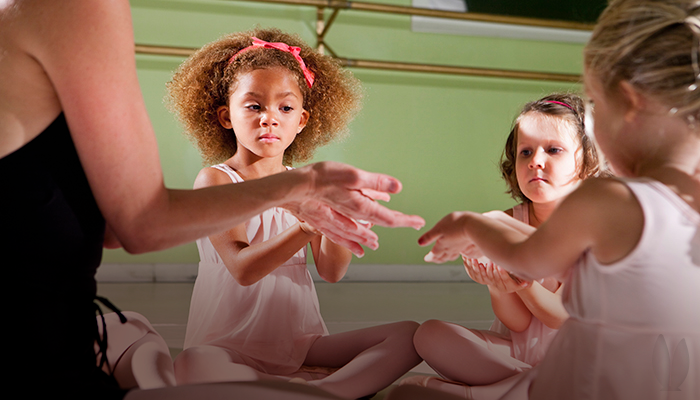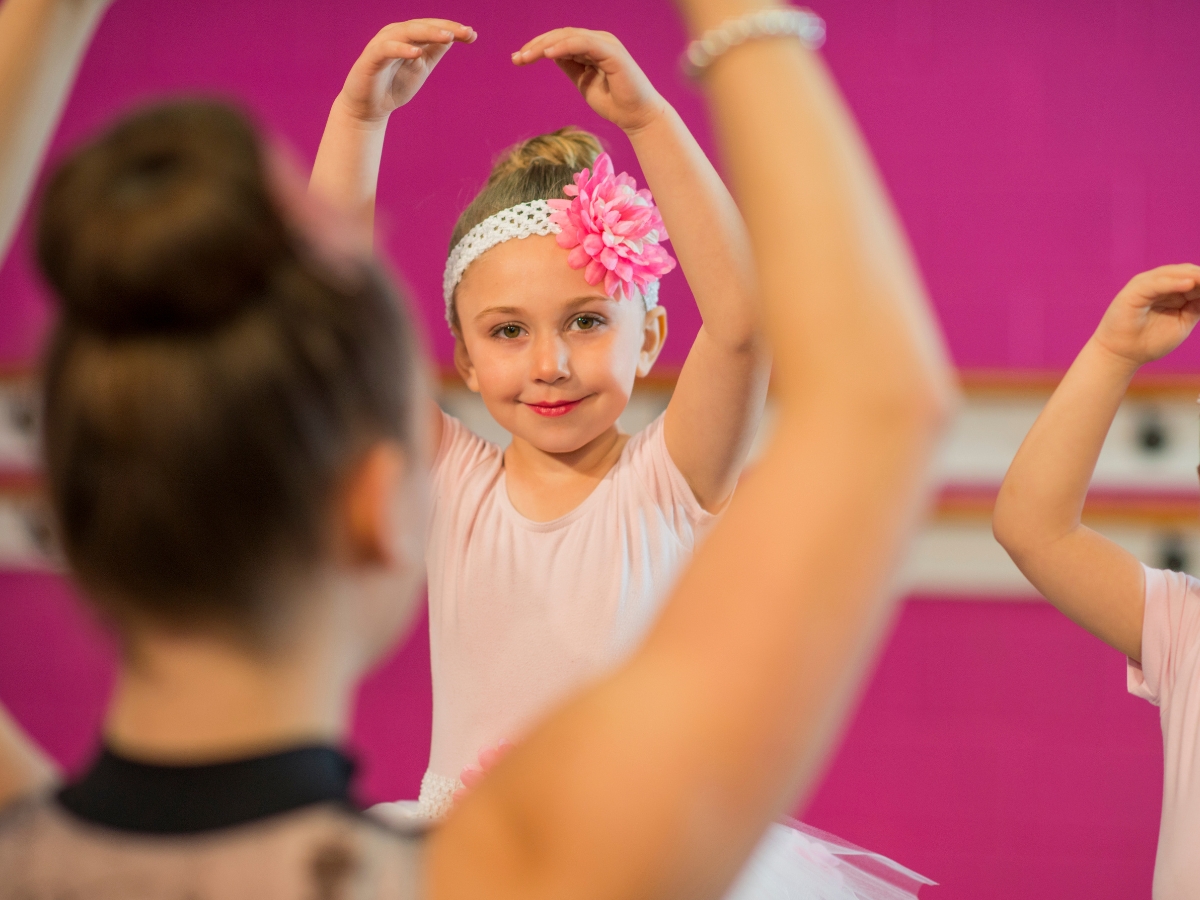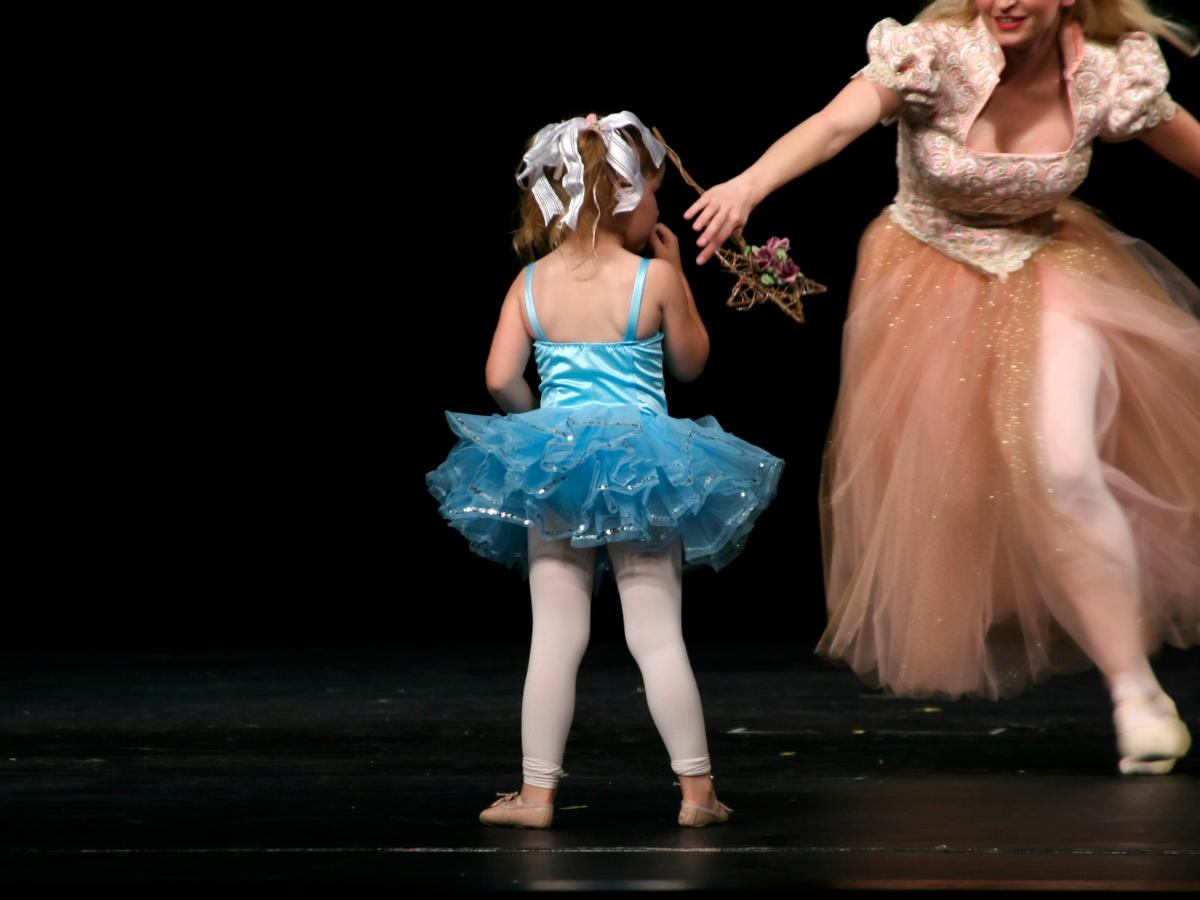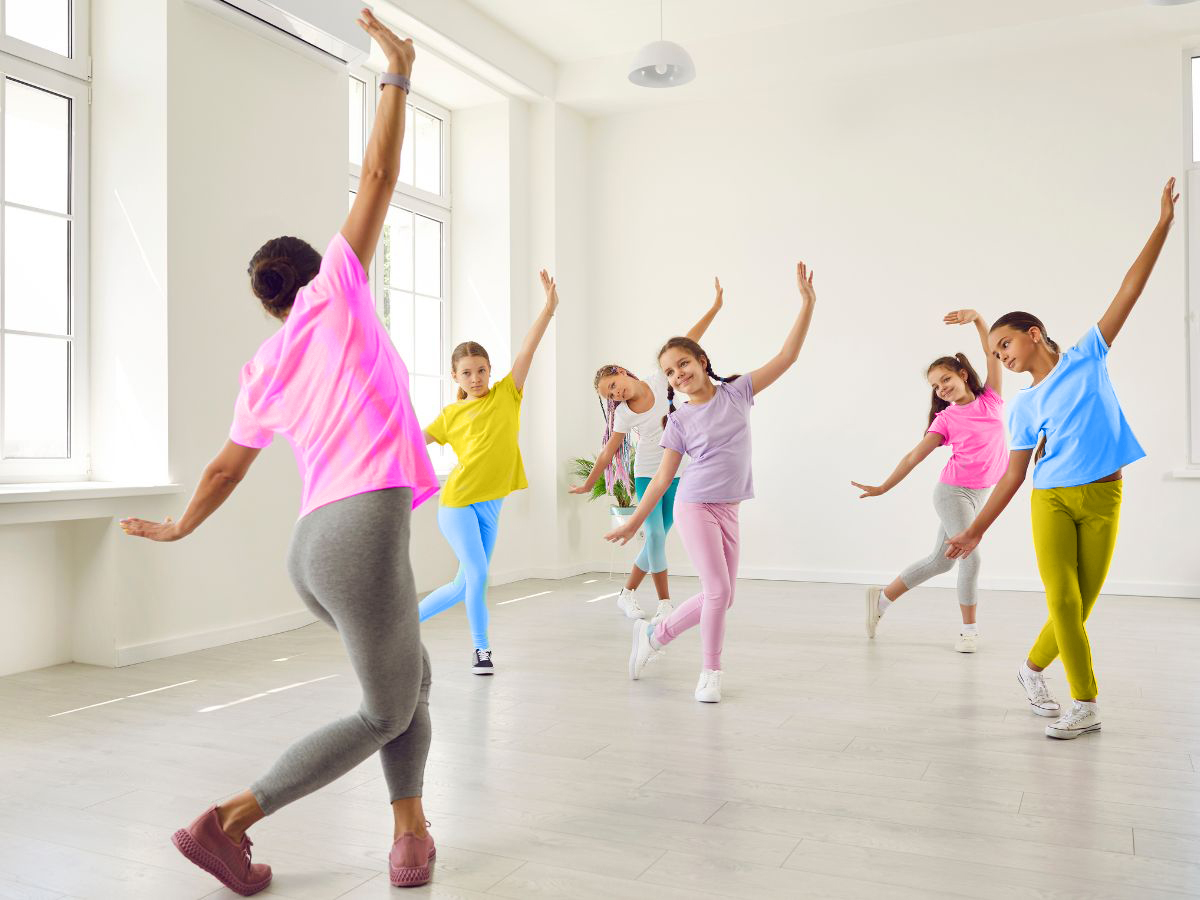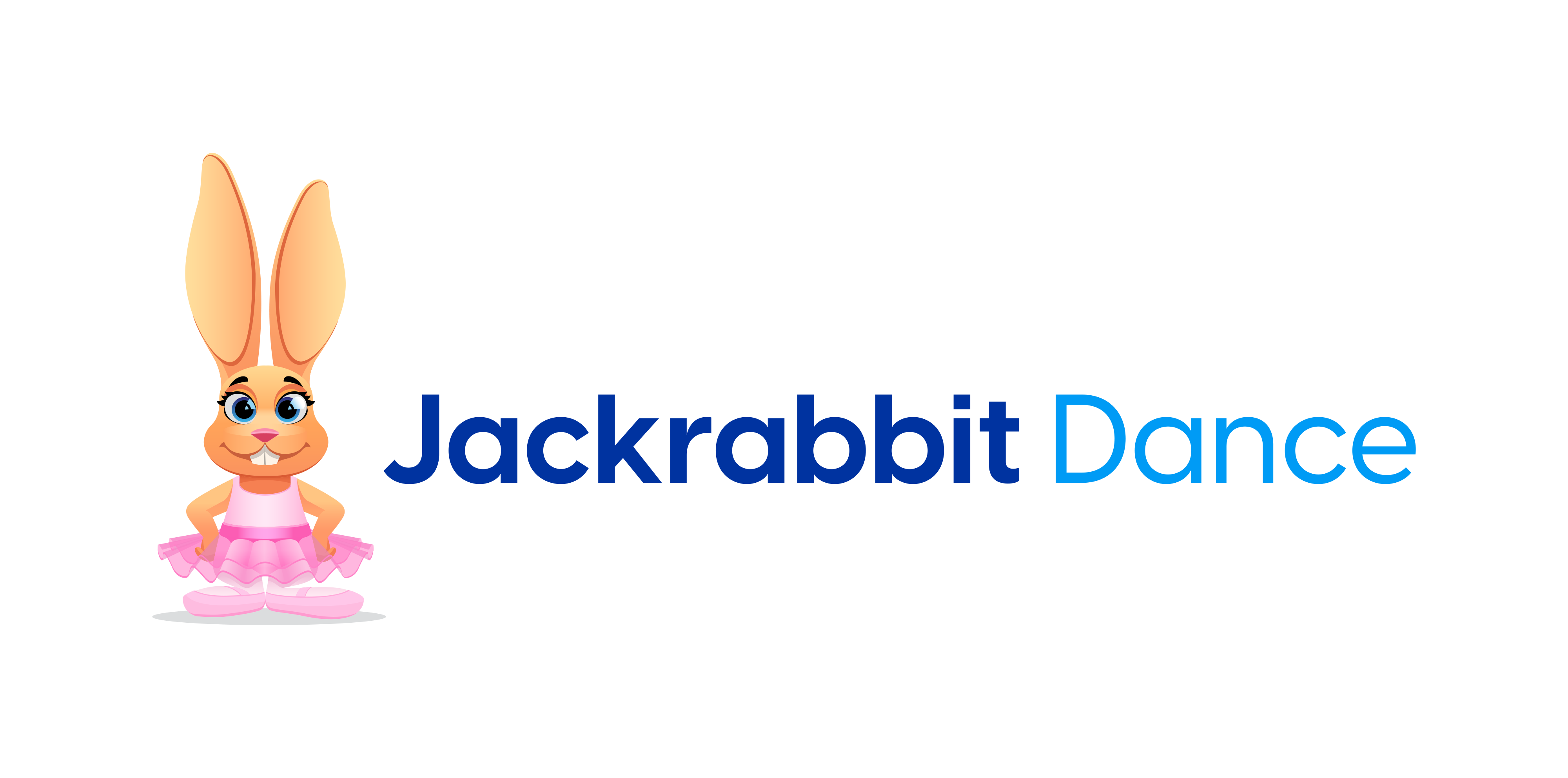Play makes learning more fun especially for your youngest learners. Movement is usually a huge component of play. Children move naturally to do almost everything from achieving mobility to expressing thoughts and feelings. Movement driven by curiosity and necessity soon quite naturally becomes play. It makes sense that these movements also become the basis for development into something more. In fact, when their play movement develops into consciously structured routines that are performed with awareness – it become dance.
How is play really useful in teaching dance – so much so that it becomes part of a structured curriculum?
At first you may consider this a tug of war between fun and rigidity. But quickly realize that the tug-of-war perspective won’t help your effort to use play and structure in the best ways.
Let’s look at some key points about both play and structure in teaching tots.
Play
As noted earlier, play can make learning more fun for tots. Beyond that, it helps them to more quickly grasp exactly what they are expected to do. This works for people in general – well beyond the toddler years. Think about learning to swing a golf club or improve your tennis backhand. Your instructor probably will relate the action you need to do with a movement that you already know. Bingo. Same principle as using play movements in teaching dance.
When you take away the heavy instructional process of telling and showing a child what to do and incorporate a play movement into your teaching style, you help the child not only “get” the dance movement more quickly but you inspire in them a sense of accomplishment and discovery. It, indeed, makes learning more fun and part of reaching skill goals.
Play is the way tots engage with the world naturally so it is a very natural way to clarify and define movement. Play also gives tots a clear goal for their movements – which is important in the tot’s success in doing it.
In a very simplistic example, instead of instructing “kick higher,” try asking the tot to face the mirror and “kick over your head in the mirror.”
Play helps to tear down the barrier of understanding that frustrates both teacher and student. How many times have you struggled to tell a tot how to do a simple movement?
I remember feeling the same frustration – way back in my childhood – in trying to teach one of my first-grade classmates to skip so he could play a game with us. He had no idea how it felt to skip so he didn’t even know how to begin to do it. He finally accomplished a very awkward moving hop, pseudo-skip movement. But I don’t think he ever really got it. I had nothing to help me relate the movement him.
This is the barrier that I speak of. Incorporating a play element that a tot already does takes away their cycle of trying to figure out what you’re talking about. It’s huge! This barrier can be quite a distraction to accomplishing even a small part of a movement. If they can’t get by this barrier they will never get to the repetition part of the teaching process that actually turns the movement into a learned skill.
To summarize, play:
- breaks down learning barriers.
- speeds the learning process.
- easily allows for repetition of movements.
- keeps tots engaged.
- builds a sense of accomplishment and confidence.
- makes learning fun.
Structure
You may think structure is mostly beneficial to you. After all, you need structure to create class levels, recognize one dancer’s progress within a group or accept dancers into your school who have been taking lessons elsewhere. You also need teaching structure to organize your teaching curriculum from lesson to lesson and year to year.
Structure in teaching is also very beneficial to tots. Even at a very young age, we need structure to make progress in learning. Structure also gives students a way to compare themselves to the other dancers in their class.
Not sure this matters at the tot level? Watch your young dancers. Notice how they look at each other to confirm their movement. A simple tap combination of brush,brush,step will be checked out by a tot with a side glance of the neighboring tot. Even tots notice these details.
To summarize, structure:
- Provides a framework on which classes, skills and milestones can be built.
- Supports a defined developmental path that doesn’t remove opportunities for individualism.
- Creates a springboard for creativity for student and teacher.
- Defines age-appropriate expectations and levels of achievement.
- Provides guidelines between schools as to what dancers should know and be able to do at specific benchmarks.
Both play and structure are critical to your tots’ success in learning. Play is the tool that helps your tots to reach the goals that defined by your structure. The two don’t compete for percentages of time in your lessons. You can’t divide your class into play and structure because one helps you to more quickly, easily and pleasingly accomplish the other.
Good Play-Skill Examples
Play that integrates a fun activity into executing a skill are now your play tools. What are sme examples of pay tools that your tots may respond to?
Hopscotch is the perfect blend of play and skill where tots hop, leap and jump from and to specific squares. You can even incorporate boxes that tots can leap over. They are playing Hopscotch. You’re teaching them the beginnings of a dance leap or a hop that more complex skills are built on.
Crazy Eights is a great game with the added bonus of helping tots with counting. In the game, they move for eight counts, then clap for eight counts. Small instruments can even be used instead of clapping. Following the eight counts will also be valuable since routines that these young tots will do later are done in eight counts.
Follow the Leader is an excellent one that allows the teacher to have absolute control over the tots’ movements as they walk around the studio in a neat line. Simon Says can work much the same way.
Incorporate objects. If the object is interesting enough – like a pretty helium balloon – just moving it from one side of the room to the other is a game in itself. Students may look forward and you may be able to use it to keep them looking ahead during the lesson.
Leverage Play to More Effectively Teach
I think you get the idea. You can integrate movement into many of your tots’ favorite games. It is also very easy to match appropriately skilled games with different class skill levels.
One of the biggest advantages of using play in teaching is the ease it provides in incorporating repetition without introducing boredom. And we know how critical repetition is to learning. By playing a game you can layer skills into a repetitive group.
Play also helps you to move along – to keep from getting stuck on one skill – even if it is challenging for some tots. Play also just simply keeps everyone moving. It gives you an easy way to use your entire space with your tots having them move from side to side, corner to corner or around in a big circle in playing their skills games.
Play allows you to easily involve a misbehaving child so the behavior doesn’t disrupt the class or to distract your class if an assistant needs to give individual attention to specific tots (like is someone begins to cry or is sick).
Play allows you to have a secret weapon too. You know, that special game that you only bring out when you really need it. Perhaps it’s a magic trick that some or all of them participate in. Maybe it is a special dance that involves a magical prop – like a fairy godmother wand or a crown. They can practice walking on their toes with good posture like a queen or practice graceful arm movements with a fairy godmother wand.
If you think about it, play helps teachers to more effectively teach and to more quickly and successfully reach goals that define curriculum structure.
Sources: Dance Studio Life, Dance Advantage, National Dance Education Organization (NDEO)
<!–[if lte IE 8]>
<![endif]–> hbspt.cta.load(3803665, ’31bc32de-7d17-445c-b173-183f11352340′, {});
hbspt.cta.load(3803665, ’31bc32de-7d17-445c-b173-183f11352340′, {});







